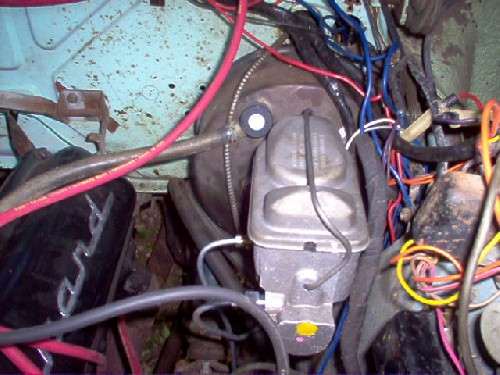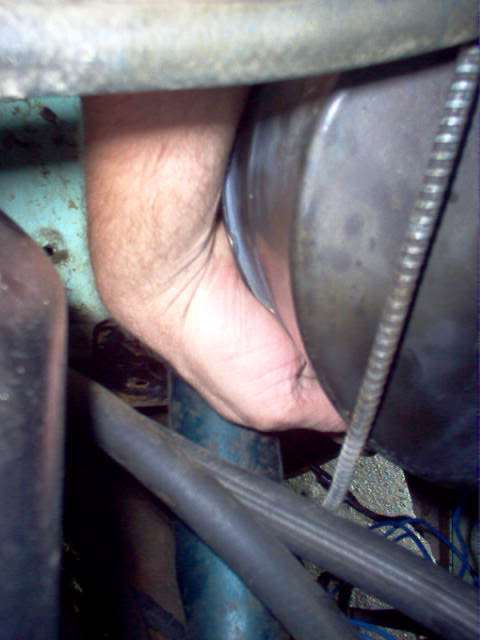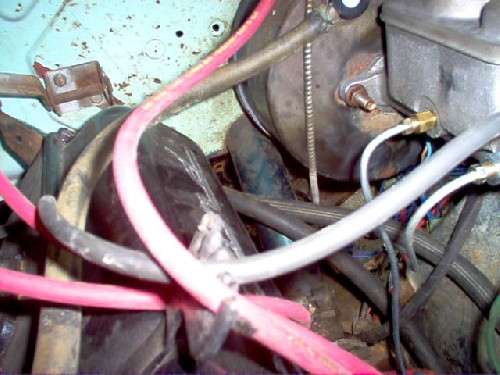Re: Disc Brake Conversion
Posted by Eric Boyle On 2010/9/20 12:19:18
Here's the 1999 Ranger booster on my old '56 Patrician, which gives you a good idea of the clearances. I didn't use the Ranger master cylinder, as I wanted something with passenger side line outlets to keep them away from the fenderwell since I had all my pushbutton relays right there.
You can see that the master cylinder itself is well away from the exhaust manifold, and up high where it gets airflow from the fan. And yes, I used the hole where the vent duct was at, it's the simplest and easiest way to do it IMHO.
Quote:
I think that right there is what's going on, and why it's a non-issue in the Tri-5 Chevies and cars with it mounted horizontally. Building a heat shield is only going to trap more dirt and debris, as there's all kinds of places stuff can get in there around it. The best thing to do is to put a different booster and master cylinder up high on the firewall, then it's problem solved for good. Remember, you're still dealing with a single line master cylinder, which is dangerous enough as it is.
Attach file:
 (56.97 KB)
(56.97 KB)

 (33.44 KB)
(33.44 KB)

 (51.64 KB)
(51.64 KB)

You can see that the master cylinder itself is well away from the exhaust manifold, and up high where it gets airflow from the fan. And yes, I used the hole where the vent duct was at, it's the simplest and easiest way to do it IMHO.
Quote:
HH56:The heat may well have something to do with it but doubt the angle by itself since they were all the same since introduction. Do believe the angle would be a contributor though since any cooked fluid or debris would just float to the most vulnerable part of the unit, namely the compensator valve which is right at the top with it angled. On the cars with it mounted horizontal there may be enough difference in design where garbage could float & lodge somewhere else.
Regarding the low location and a modern unit, I would think the remote fill setup would go a long way toward eliminating moisture problems and perhaps a heat shield or insulating material would help the other.
I think that right there is what's going on, and why it's a non-issue in the Tri-5 Chevies and cars with it mounted horizontally. Building a heat shield is only going to trap more dirt and debris, as there's all kinds of places stuff can get in there around it. The best thing to do is to put a different booster and master cylinder up high on the firewall, then it's problem solved for good. Remember, you're still dealing with a single line master cylinder, which is dangerous enough as it is.
Attach file:
 (56.97 KB)
(56.97 KB)
 (33.44 KB)
(33.44 KB)
 (51.64 KB)
(51.64 KB)
This Post was from: https://packardinfo.com/xoops/html/modules/newbb/viewtopic.php?post_id=60338